Refitting Viatori
Mechanical
We started off by having the engines serviced. Hoses, clamps and any suspected problems replaced. The fuel was polished, and any damaged or brittle wiring/hoses were replaced. During our own inspection of systems, that had been noted as operating, we decided the best course of action was to replace anything questionable.
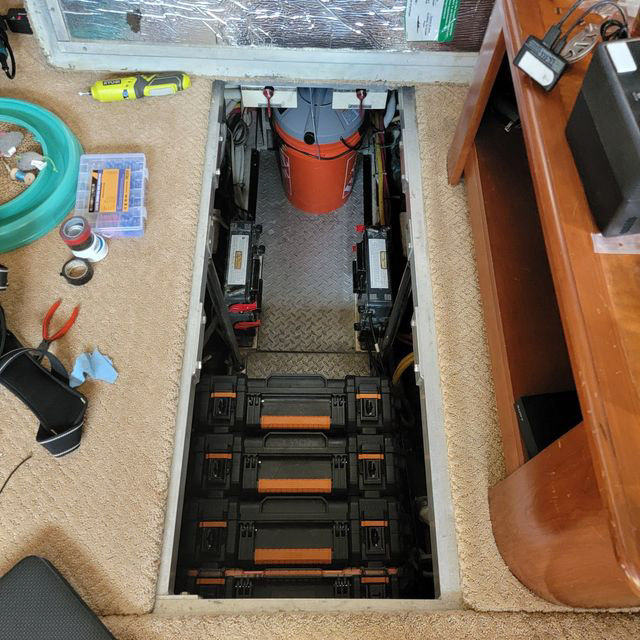
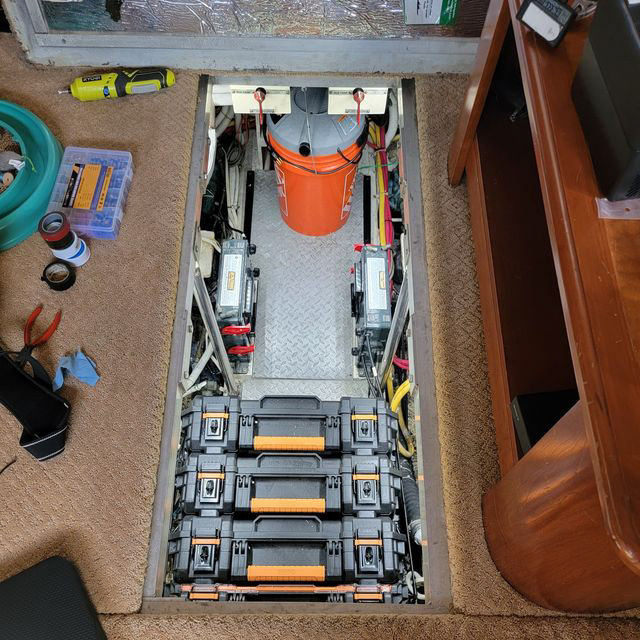
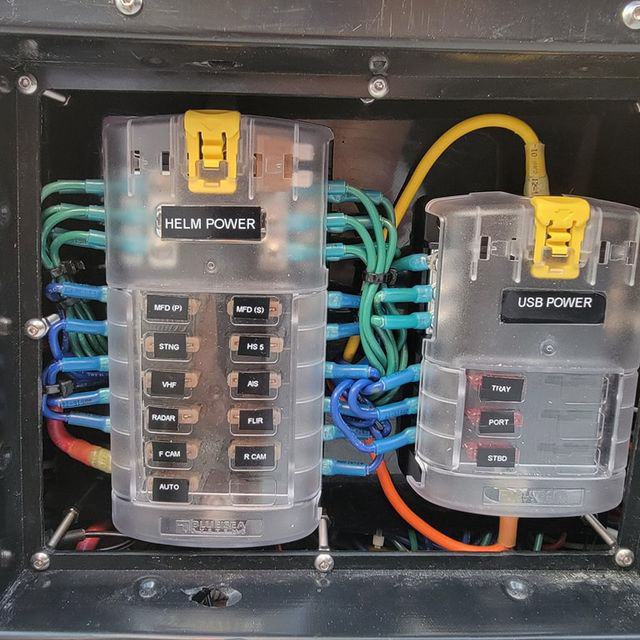
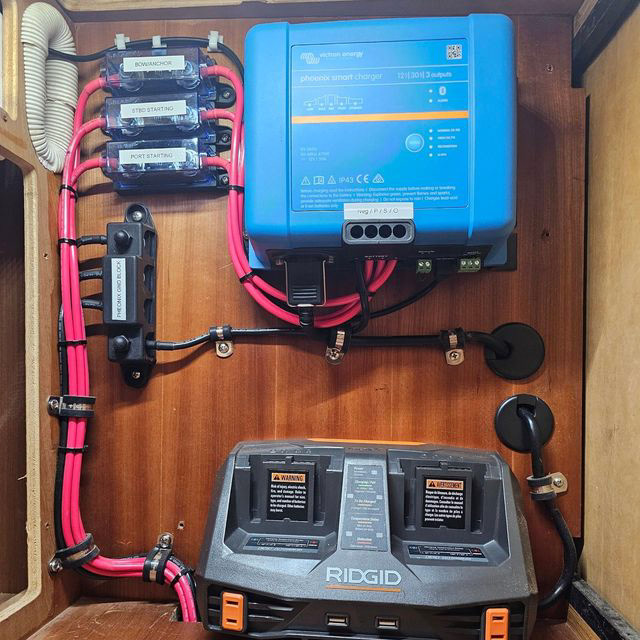
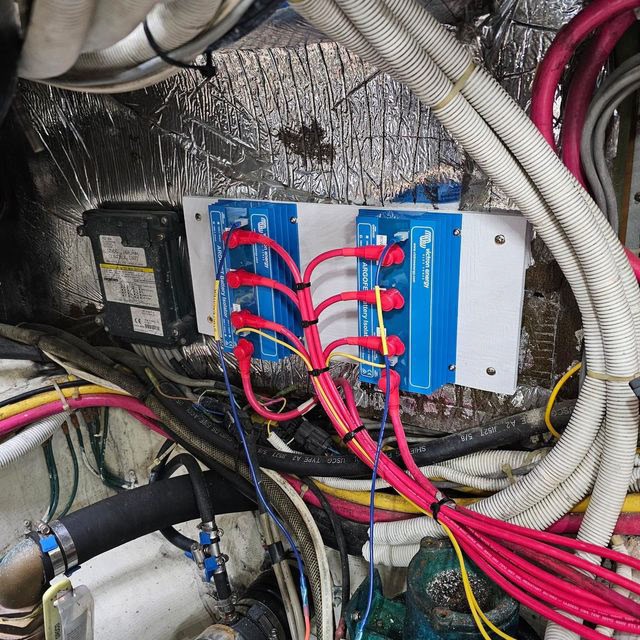
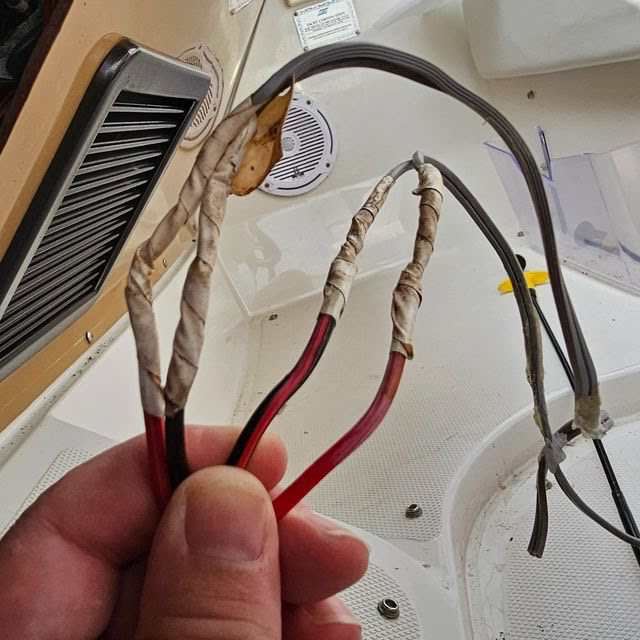
Electrical
The charging system was in bad shape with one charger not working and second charger a concern for what and if it was charging. A problem with the generator starter battery being very hot and off gassing, turned out to be the port starter battery. We replaced the Optima Blue Top batteries that were being used for starters, windlass and bow thruster to batteries more suitable for those tasks. The two chargers were replaced with a single Victron Multiplus to keep the house batteries charged.
We labeled the main wiring and changed out all lights on the exterior to LED. The concern was the 20 years old navigation lights that were not working. She can now be seen up to three nautical miles. Dealing with all the previous repairs that were done, maybe, in haste was time consuming.
Miscellaneous
We started off with replacing all fire extinguishers and carbon monoxide alarms. There was a short in the system that was causing the carbon monoxide alarms to overheat showing some signs of scorching under the mounts. We opted to remove the wired alarms with 5 years sealed units that are both carbon monoxide and smoke alarms.


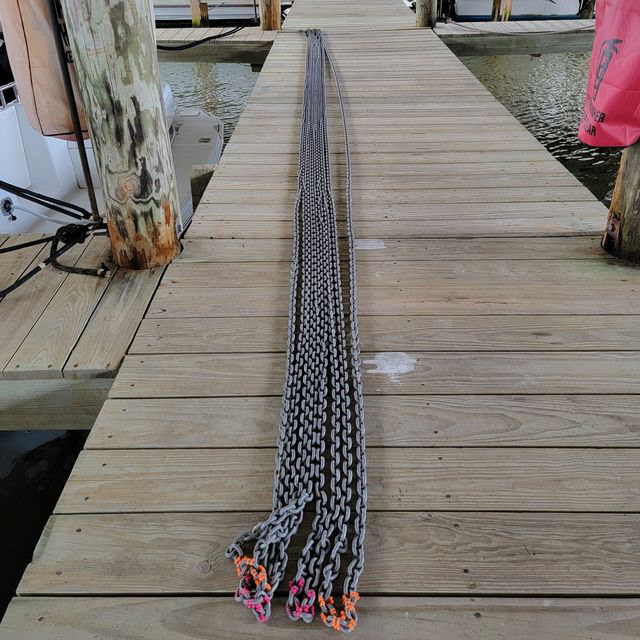
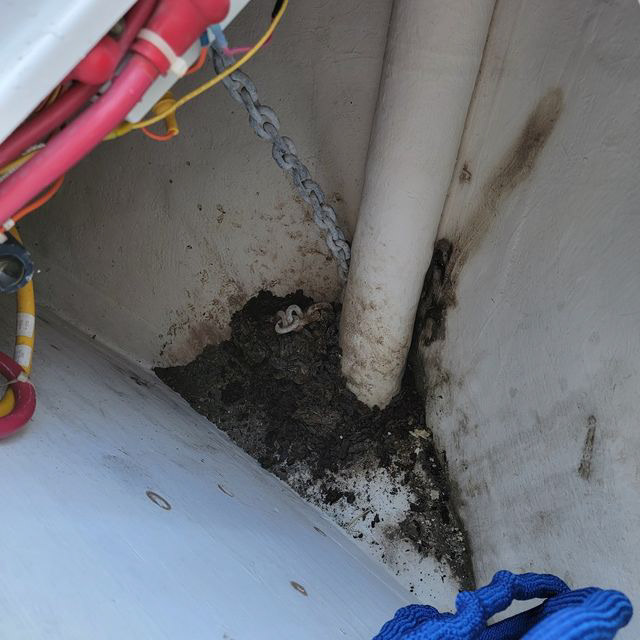
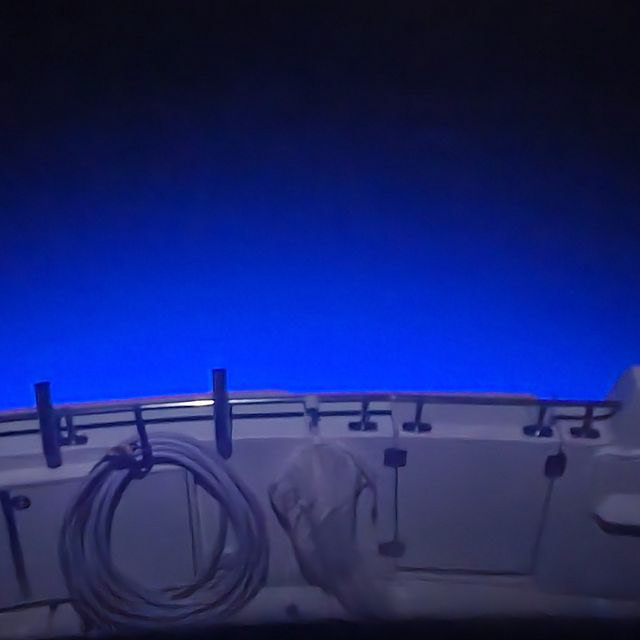

Safety and Electronics
Some of the first things we replaced were all the old signaling devices. We labeled where the fire extinguishers and life vest are located. We added an EPIRB (emergency position indicator radio beacon) unit, ditch bag and a self-inflating throwable. We bought Mustang Survival life vest and added water activated safety lights and PLB's (personal locator beacon) to each jacket.
We had realized that the majority of the items we wanted to add for safety would also be tied into the electronics package. We decided to use Raymarine products. The PLB's are tied into the radio and autopilot system to alert anyone at the helm that a person is overboard and sound an external 120db alarm. The PLB's location is put on the chart and if no one responds to the alert on the monitor, the engines are cut off. A tricky set-up, but it gives us some peace of mind.
The Challenge
Unfortunately, there are some people that try to find the easiest solution, not necessarily the correct solution. Cable runs that should have been a day at the most were extended to four days due to voids being filled with Great Stuff foam to stop a leak. Access panels that should be easy to remove were put in place with 5200 adhesives. Where twenty feet of cable had been needed, seventy feet of cable was used. Plumbing fixtures were sealed with putty instead of silicone and twisting wires together and using electrical tape was the norm. The helm station panels were regular pieces of plastic, held in place with minimal fasteners and the placement of some of the items made no sense. We stripped the helm and started fresh for our new helm station.



